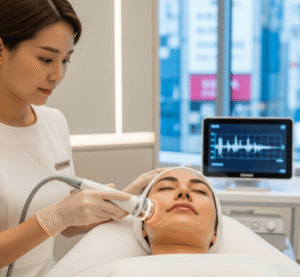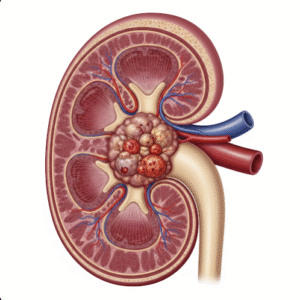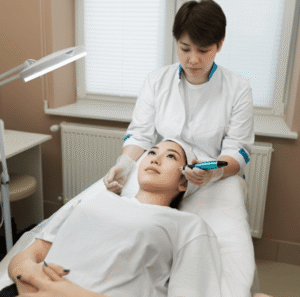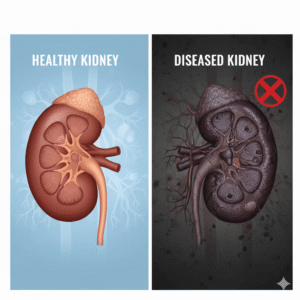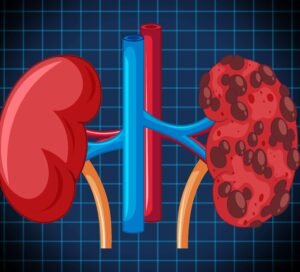➤ What it is
Pityriasis Versicolor, also known as Tinea Versicolor, is a common superficial fungal infection of the skin. It is caused by the overgrowth of a yeast called Malassezia, which naturally lives on human skin but can multiply excessively under certain conditions.
The condition leads to the appearance of discolored patches that may be lighter (hypopigmented) or darker (hyperpigmented) than the surrounding skin. These patches are often scaly, mildly itchy, and more visible after sun exposure, since affected areas do not tan normally.
It commonly affects the chest, back, shoulders, neck, and face. While harmless, it often causes cosmetic concerns due to its visible appearance.
In Korea, pityriasis versicolor care focuses on eliminating fungal overgrowth, preventing recurrence, and restoring even skin tone. Dermatologists combine antifungal therapies with cosmetic skin care programs to achieve both medical control and cosmetic refinement.
➤ Why it’s done
Treatment of pityriasis versicolor is recommended for several reasons:
- Medical Control → Prevents the yeast from continuing to spread and cause larger skin patches.
- Cosmetic Improvement → Restores an even skin tone, which is a high priority in Korean beauty culture.
- Symptom Relief → Reduces mild itching or irritation.
- Prevention of Recurrence → Since the condition tends to come back in warm and humid conditions, preventive care is essential.
- Confidence Boost → Visible patches on exposed areas (neck, chest, back) can affect self-esteem.
In Korea, dermatologists emphasize long-term preventive care to keep the skin balanced and free of recurrence, while also improving skin texture and radiance.
➤ Alternatives
Several treatment alternatives exist, depending on the severity of infection and patient needs:
Topical Treatments
- Antifungal creams or lotions (clotrimazole, ketoconazole, terbinafine).
- Medicated shampoos (selenium sulfide, zinc pyrithione, ketoconazole) applied to affected skin.
- Sulfur-based washes used to reduce fungal load.
Systemic Treatments
- Oral antifungals (itraconazole, fluconazole) prescribed for widespread or recurrent cases.
- Reserved for patients who do not respond to topical therapy.
Cosmetic and Supportive Care in Korea
- Skin exfoliation therapies to remove residual scaling.
- LED light therapy to calm inflammation and promote skin healing.
- Whitening and pigmentation-balancing facials to restore even skin tone.
Lifestyle Alternatives
- Wearing breathable fabrics.
- Avoiding heavy oils and greasy skincare products.
- Regular cleansing to reduce fungal overgrowth.
➤ Preparation
Before starting treatment for pityriasis versicolor, preparation ensures accuracy and effectiveness:
- Dermatological Evaluation
- Skin examination with a Wood’s lamp (UV light) to confirm diagnosis.
- In some cases, a skin scraping examined under the microscope confirms the presence of Malassezia yeast.
- Skin Care Adjustments
- Discontinue harsh or oily products that may worsen fungal growth.
- Switch to gentle cleansers and light moisturizers.
- Lifestyle Preparation
- Patients are advised to avoid excessive sweating before the test or treatment.
- In Korea, dermatology clinics may recommend pre-treatment facials or cleansing sessions to reduce sebum and prepare skin for antifungal care.
➤ How it’s Done
Pityriasis Versicolor Care in Korea typically includes the following steps:
1. Medical Antifungal Therapy
- Topical creams or shampoos applied directly to lesions.
- For extensive cases, oral antifungal medication prescribed for a limited course.
2. Exfoliation & Cleansing
- Gentle exfoliation removes the outer scaly layer, improving treatment penetration.
- Korean clinics may use enzyme-based exfoliants to avoid irritation.
3. Pigmentation Management
- After fungus is cleared, pigment changes can persist for weeks or months.
- Korean dermatologists often recommend whitening serums, vitamin C facials, or niacinamide-based skincare to restore uniform tone.
4. Advanced Korean Dermatology Therapies
- LED light therapy → reduces inflammation and accelerates skin healing.
- Moisturizing facials → restore barrier balance.
- Cosmeceutical treatments → specialized Korean products designed for sensitive, pigment-uneven skin.
5. Preventive Regimens
- Maintenance therapy with antifungal shampoos (used once weekly).
- Lifestyle counseling on clothing, hygiene, and skincare routines.
➤ Recovery
Recovery from pityriasis versicolor treatment varies:
- Short-term Recovery
- Antifungal treatment clears fungal overgrowth within 1–2 weeks.
- Scaling and itching reduce quickly.
- Long-term Recovery
- Pigment changes (lighter or darker spots) may persist for several months after the fungus is gone.
- With proper Korean skincare (whitening creams, facials), these fade faster.
Aftercare Recommendations:
- Use antifungal maintenance products (shampoos or washes) periodically.
- Avoid heavy sweating, oily products, and prolonged humidity exposure.
- Moisturize with non-comedogenic creams to prevent barrier disruption.
- Apply sunscreen daily, since UV exposure exaggerates color differences.
Korean Recovery Practices:
- Dermatology clinics provide skin tone correction facials, soothing masks, and LED therapy to accelerate pigment recovery.
- Many patients are guided into personalized skincare regimens using Korean cosmeceuticals tailored for even tone.
➤ Complications
If untreated or poorly managed, pityriasis versicolor may lead to:
- Persistent pigmentary changes → hypopigmented or hyperpigmented spots.
- Recurrent infections → very common in warm, humid climates.
- Psychological distress → cosmetic impact may reduce confidence.
- Secondary irritation → from scratching or inappropriate product use.
In Korea, dermatologists proactively minimize complications by combining antifungal therapy with pigmentation correction programs and barrier-protection skincare.
➤ Treatment Options in Korea
Korea is a global leader in cosmetic dermatology and fungal skin care integration. Pityriasis versicolor care here is not limited to antifungal treatment but also includes aesthetic and preventive strategies.
Why Korea excels:
- Comprehensive Approach → Focus on both fungal eradication and cosmetic restoration.
- Advanced Technologies → LED, laser tone correction, and cosmeceutical therapies.
- Expanded Care Programs → Combining antifungal medications with whitening facials, hydration boosters, and pigmentation management.
- Patient-Centered Focus → Korean dermatologists emphasize holistic recovery (medical + cosmetic + lifestyle).
Unique Korean Practices:
- Combination facials → antifungal cleansing, exfoliation, and whitening serums.
- Tone-correcting treatments → for pigment recovery post-infection.
- Personalized K-beauty regimens → dermatologist-approved skincare customized to avoid oily, fungal-triggering products.
- Medical tourism packages → international patients often seek care in Korea for both treatment and cosmetic refinement.
✨ Final Thoughts
Pityriasis Versicolor Care in Korea represents the perfect balance of medical dermatology and cosmetic skincare science. While antifungal therapy eliminates the yeast overgrowth, Korean dermatologists go a step further by ensuring skin tone restoration, barrier repair, and preventive care.
With advanced therapies, cosmetic-conscious facials, and preventive regimens, patients achieve not only medical resolution but also aesthetic satisfaction. Korea’s emphasis on long-term management and even skin tone makes it one of the best destinations worldwide for treating and caring for pityriasis versicolor.


